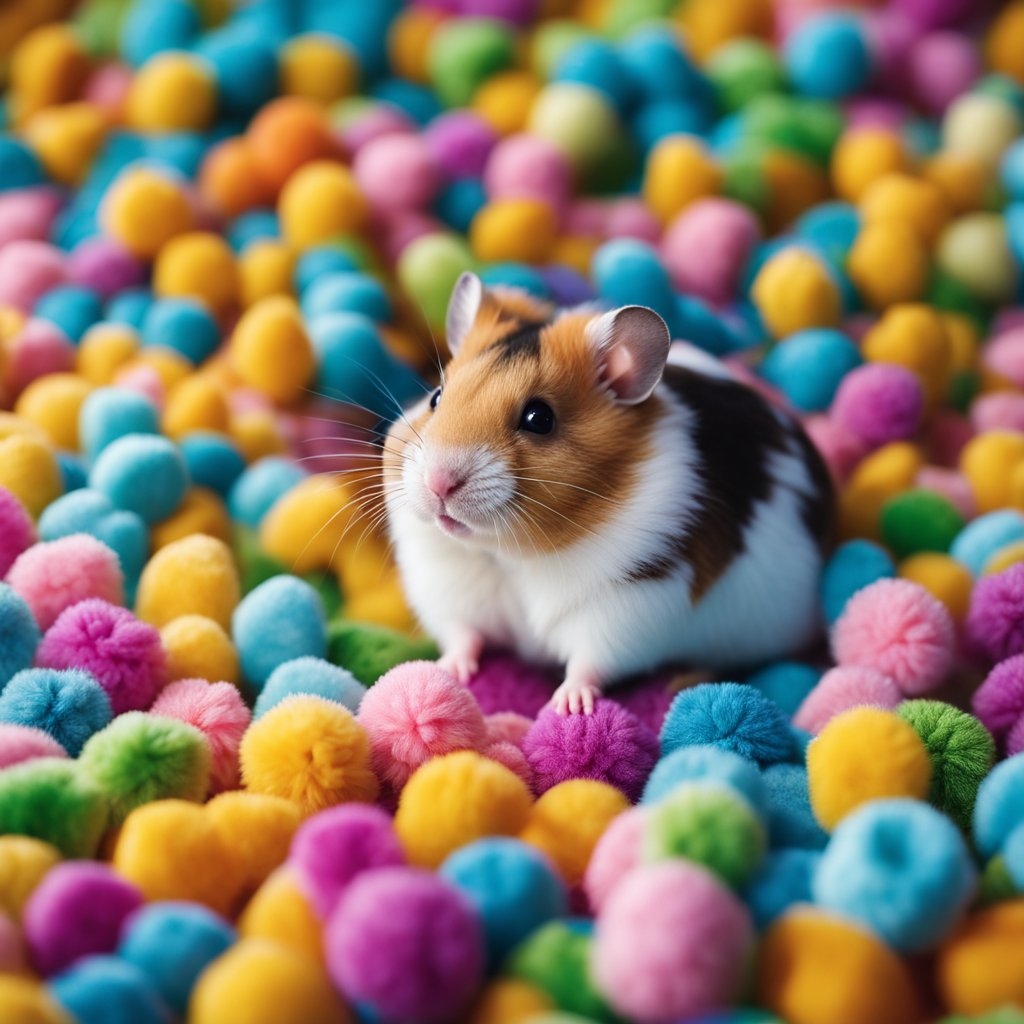Why do Hamsters Puff? Understanding the Reasons Behind Hamster Puffing
Hamsters are adorable little creatures that can make great pets. They are active, curious, and fun to watch. However, if you are a new hamster owner, you may be surprised to see your furry friend suddenly puffing up. Why do hamsters puff? Is it a sign of aggression, fear, or something else? In this article, we will explore the reasons behind this behavior and what it means for your hamster.
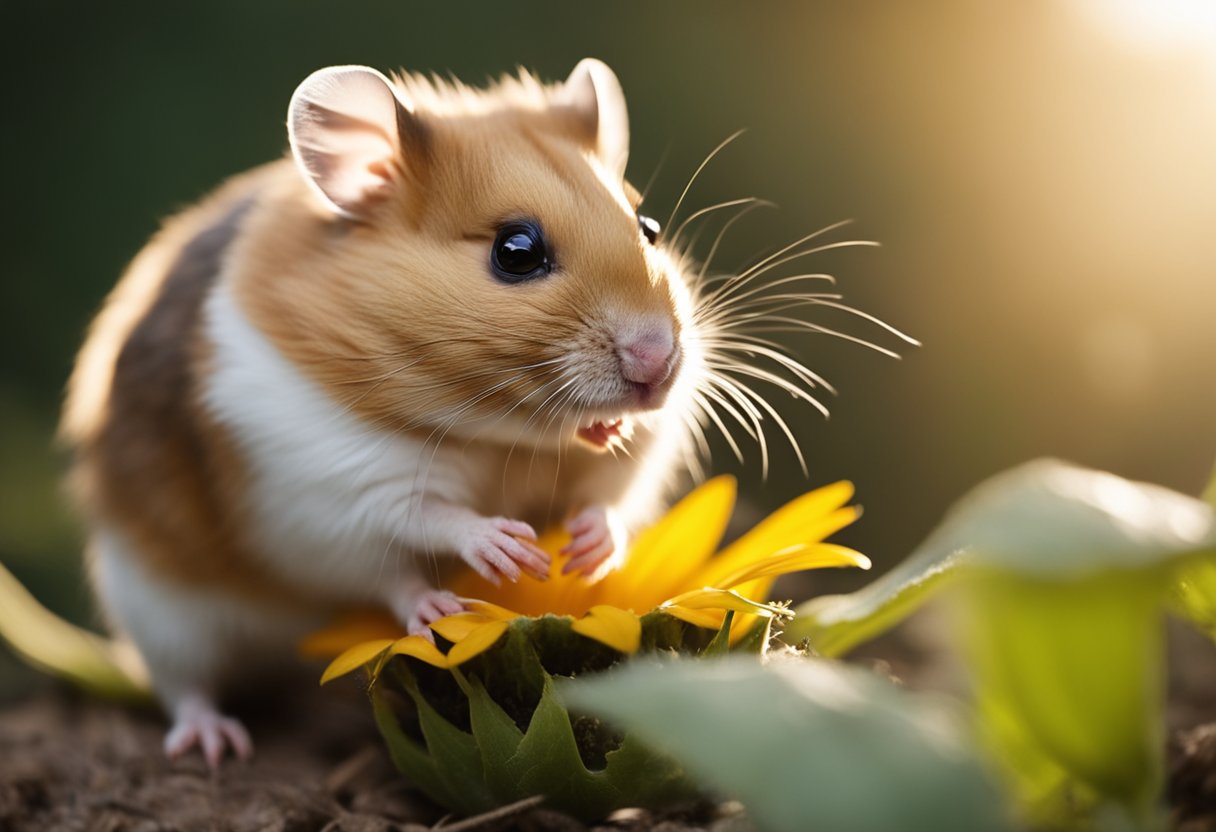
Understanding Hamster Behavior
Hamsters are known for their unique behaviors, such as hoarding food, running on wheels, and burrowing in bedding. Puffing is another behavior that hamsters exhibit, and it can have different meanings depending on the context. For example, if your hamster is puffing up its fur while sleeping, it is a sign of relaxation and comfort. On the other hand, if your hamster is puffing up its fur while interacting with you or another hamster, it could be a sign of aggression or fear.
Health and Stress Indicators
Puffing can also be an indicator of your hamster’s health and stress levels. If your hamster is constantly puffing up its fur and appears lethargic or uninterested in its surroundings, it could be a sign of illness or depression. On the other hand, if your hamster is puffing up its fur and appears tense or anxious, it could be a sign of stress or discomfort. As a hamster owner, it is important to observe your pet’s behavior and body language to ensure that it is healthy and happy.
Key Takeaways
- Hamsters puff for various reasons, including relaxation, aggression, fear, illness, and stress.
- Puffing can be a sign of your hamster’s emotional and physical well-being.
- As a hamster owner, it is important to understand your pet’s behavior and provide a safe and comfortable environment for it.
Understanding Hamster Behavior
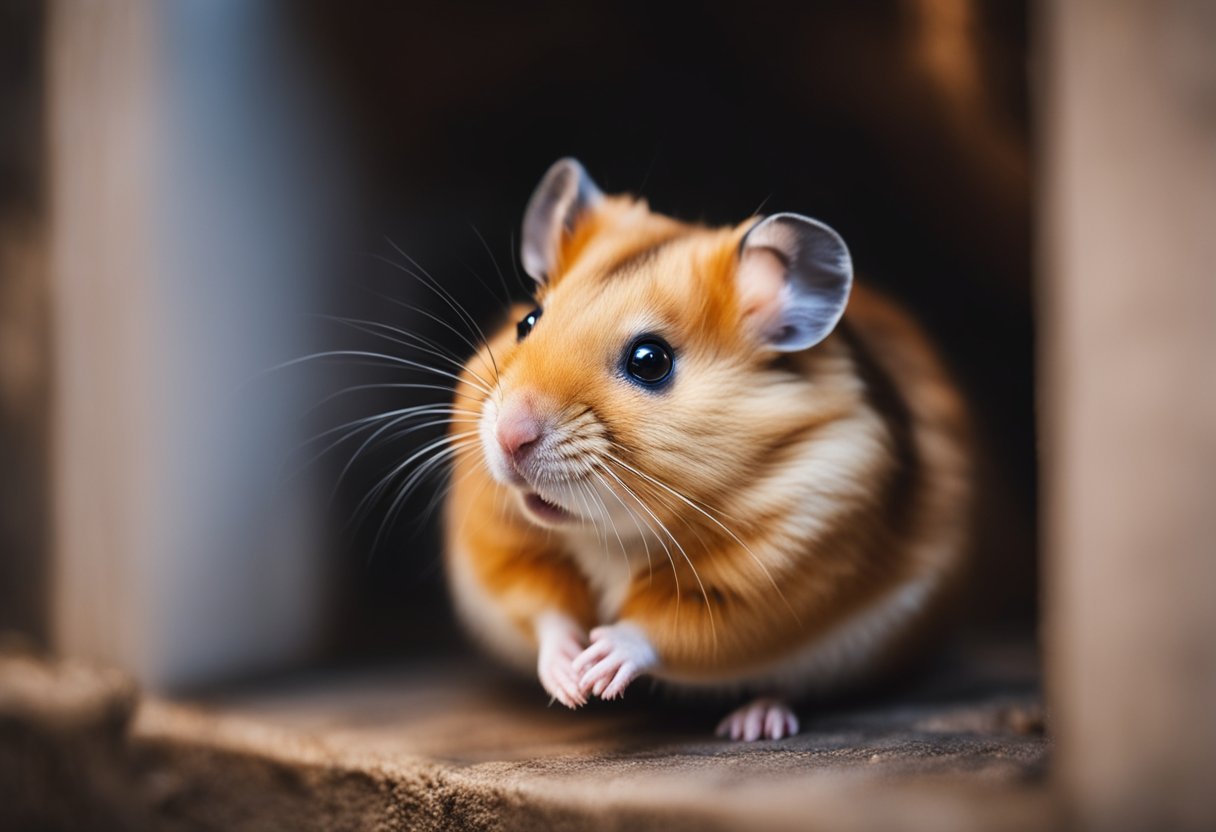
Hamsters are fascinating pets that can display a wide range of behaviors. Understanding their behavior can help you create a better bond with your pet and provide them with a comfortable and happy environment. In this section, we will discuss the reasons why hamsters puff and their communication and body language.
Reasons for Puffing
One of the most common behaviors exhibited by hamsters is puffing. Hamsters puff for a variety of reasons, including fear, aggression, and illness. When a hamster is afraid, it may puff up its fur to make itself look bigger and more intimidating to potential predators. Similarly, when a hamster is feeling aggressive, it may puff up its fur to make itself look more threatening to other animals.
Puffing can also be a sign of illness. If your hamster is puffing up its fur and showing other signs of illness, such as lethargy or loss of appetite, it is important to take them to a veterinarian as soon as possible.
Communication and Body Language
Hamsters use a variety of body language and vocalizations to communicate with each other and with their human caretakers. Understanding their communication can help you better care for your pet and avoid misunderstandings.
Some common body language signals that hamsters use include:
- Puffing up their fur: As discussed above, puffing up their fur can be a sign of fear, aggression, or illness.
- Ears laid back: When a hamster lays its ears back, it is usually a sign of fear or aggression.
- Teeth chattering: Hamsters may chatter their teeth when they are feeling anxious or afraid.
- Hissing: Hissing is a sign of aggression or fear.
By paying attention to your hamster’s body language, you can better understand their needs and emotions. This can help you create a more comfortable and happy environment for your pet.
Health and Stress Indicators
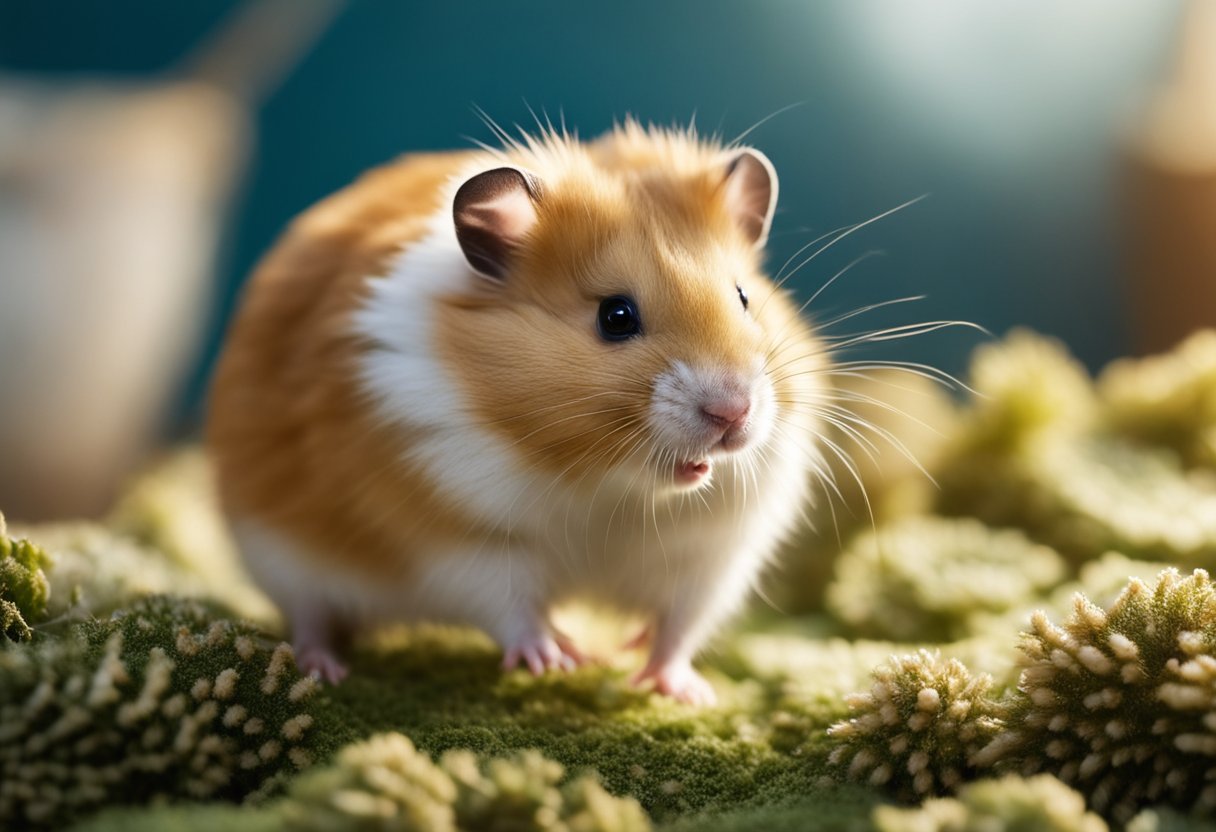
Hamsters are generally healthy animals, but like any living creature, they are susceptible to health problems and stress. Understanding the common health concerns and stress-related behaviors in hamsters can help you identify potential issues early and take appropriate action.
Common Health Concerns
Hamsters can suffer from a variety of health problems, including dental issues, respiratory infections, and digestive problems. One common health concern in hamsters is obesity. Hamsters that are overweight or obese are at higher risk for health problems such as diabetes and heart disease. To keep your hamster healthy, it is important to provide a balanced diet and plenty of exercise opportunities.
Another common health issue in hamsters is dental problems. Hamsters have constantly growing teeth, and if their teeth become too long, they can develop painful dental problems. Signs of dental problems in hamsters include drooling, difficulty eating, and weight loss. If you notice any of these symptoms in your hamster, it is important to take them to a veterinarian for treatment.
Stress-Related Behaviors
Stress can also be a significant concern for hamsters. Hamsters can become stressed for a variety of reasons, including loud noises, rough handling, and changes in their environment. Stress can cause a range of physical and behavioral symptoms in hamsters.
One common stress-related behavior in hamsters is puffing. When hamsters puff, they are trying to make themselves look bigger and more intimidating to potential predators. However, puffing can also be a sign of stress. If your hamster is puffing frequently, it may be a sign that they are feeling anxious or threatened.
Other stress-related behaviors in hamsters include excessive grooming, restlessness, and attempts to escape. If you notice any of these behaviors in your hamster, it is important to try to identify the cause of the stress and take steps to reduce it. Providing a quiet, comfortable environment, minimizing handling, and providing plenty of opportunities for exercise and play can all help reduce stress in hamsters.
Resources
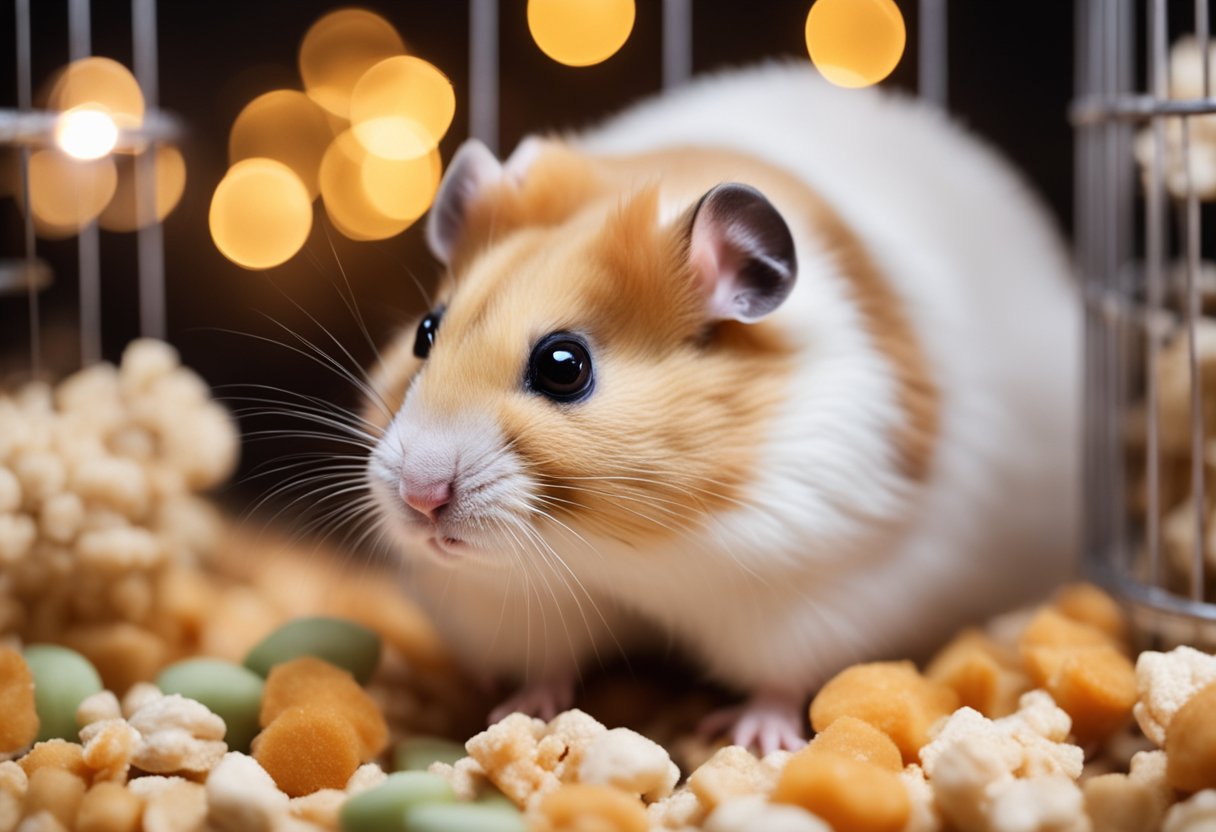
If you’re interested in learning more about why hamsters puff, there are several resources available online that can help you gain a better understanding of this behavior.
One helpful resource is Easy Way Pets, which provides a detailed explanation of why hamsters puff and what purpose it serves. According to the article, hamsters puff to store food in their cheek pouches, which allows them to have a sense of security and have food when lean times come. It is also believed that the hamsters hoarding behavior is a way to prepare for winter months when food may not be as readily available.
Another useful resource is Arcana Pets, which offers a comprehensive guide to hamster cheek pouches. The article explains how hamsters use their front paws to push the food out of their cheeks and why they don’t need any help emptying their pouches. The resource also covers common diseases that can affect hamster cheek pouches and how to prevent them.
For more information on hamster behavior, check out Petco’s resource center. The article covers normal and abnormal hamster behavior, including being active at night, chewing, and hiding. The resource also provides tips on how to keep your hamster happy and healthy.
If you’re interested in learning more about hamster cheeks and why they stuff them, Hamster Happy is another great resource to check out. The article explains how hamster cheeks are actually pouches that can be used for storage and work a bit like inflating a balloon. The resource also provides a fun experiment to try with your hamster to see how much food they can store in their cheeks.
By using these resources, you can gain a better understanding of why hamsters puff and how to keep your furry friend happy and healthy.
Conclusion
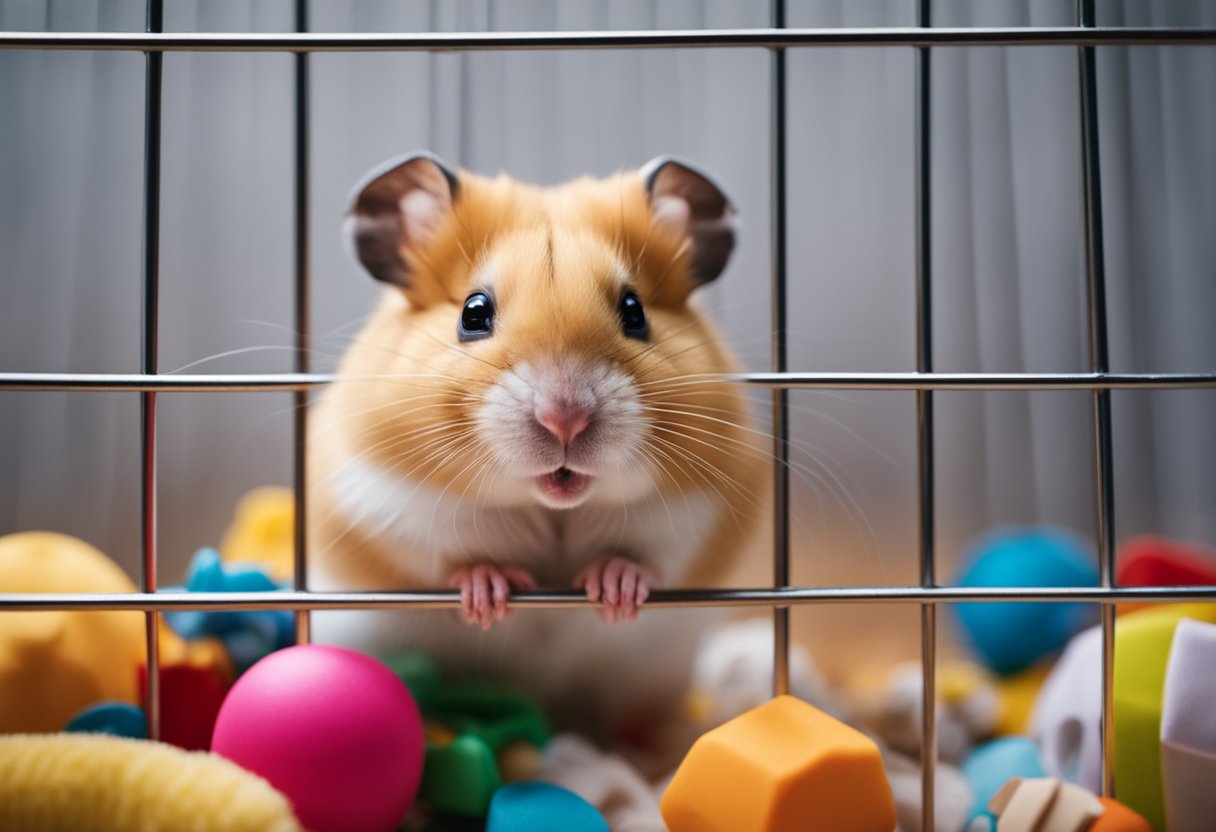
In conclusion, puffing is a common behavior among hamsters that can indicate a range of emotions and needs. It is important to pay attention to your hamster’s body language and sounds to understand what they are trying to communicate to you. By doing so, you can ensure their health and wellbeing.
Remember that puffing can be a sign of fear, stress, or illness, so it is important to provide your hamster with a safe and comfortable environment. This includes a clean and spacious cage, access to fresh water and food, and plenty of opportunities for exercise and play.
Additionally, spending time with your hamster and providing them with toys and treats can help them feel more comfortable and secure. This can reduce the likelihood of puffing and other stress-related behaviors.
Overall, understanding your hamster’s behavior and needs is key to building a strong and healthy relationship with your furry friend. Keep an eye out for signs of puffing and other behaviors, and don’t hesitate to seek advice from a veterinarian or other expert if you have any concerns.
Frequently Asked Questions
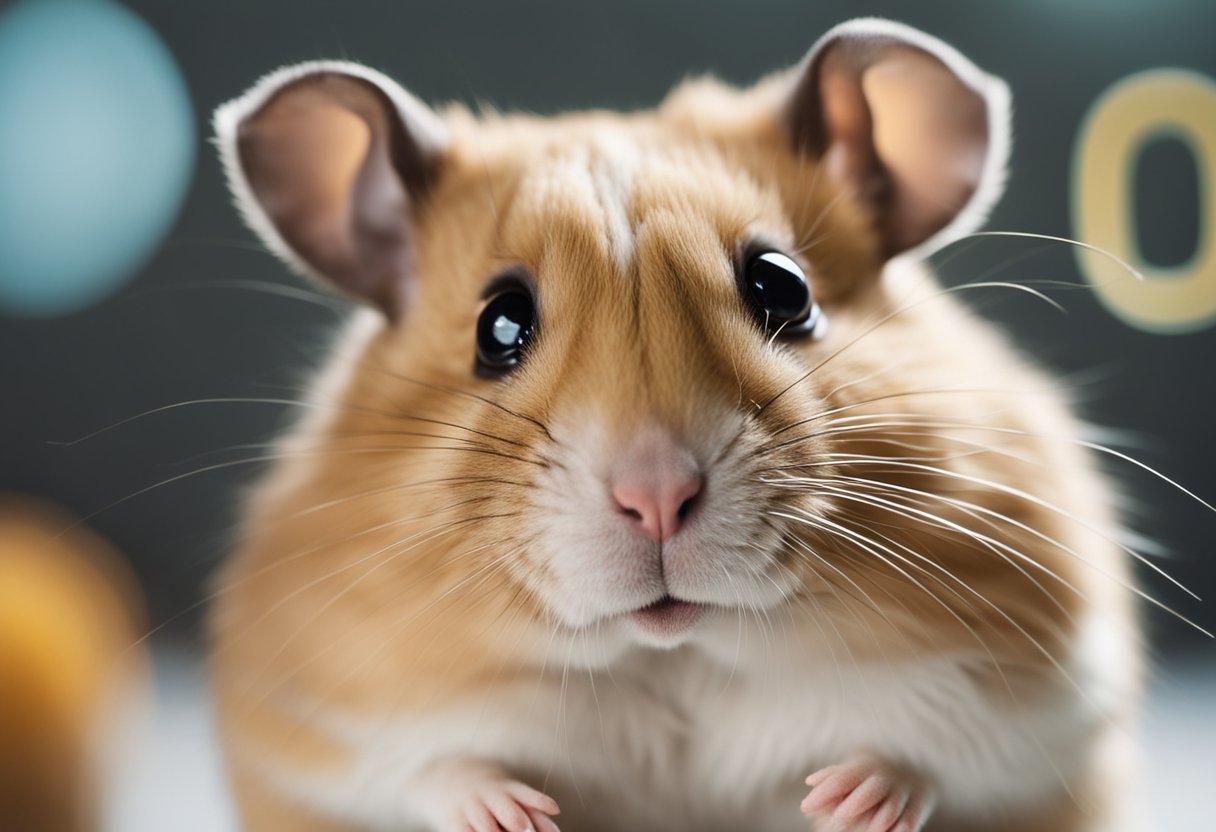
What does it mean when a hamster puffs up?
When a hamster puffs up, it can indicate several things. It can be a sign of aggression, fear, or stress. According to Chewy, hamsters may also puff up to keep themselves warm or to show off their dominance. If your hamster is puffing up frequently, it’s important to observe their behavior and environment to determine the cause.
Is it normal for a hamster to play dead?
Yes, it is normal for a hamster to play dead. This is a defense mechanism that they use in the wild to avoid predation. According to PetsRadar, hamsters may also play dead when they are scared or stressed. If your hamster plays dead, it’s important to give them space and time to calm down.
Can hamsters make purring sounds?
No, hamsters do not make purring sounds. However, they do make a variety of other sounds, such as squeaks, hisses, and chirps. According to Helpful Hyena, hamsters may also make grinding sounds when they are happy or content.
What causes a hamster to squeak?
A hamster may squeak for several reasons. It can be a sign of pain, fear, or excitement. According to Business Insider, hamsters may also squeak when they are hungry or want attention. If your hamster is squeaking frequently, it’s important to observe their behavior and environment to determine the cause.
What does a clicking noise from a hamster indicate?
A clicking noise from a hamster can indicate several things. It can be a sign of respiratory problems, dental problems, or stress. According to Caring Pets, hamsters may also click their teeth together when they are content or relaxed. If your hamster is clicking frequently, it’s important to take them to a veterinarian for a check-up.
How do hamsters express happiness?
Hamsters express happiness in several ways. They may burrow in their bedding, groom themselves, or run on their exercise wheel. According to Chewy, hamsters may also make grinding sounds or flatten their ears against their head when they are happy. It’s important to observe your hamster’s behavior and environment to determine if they are happy and healthy.
